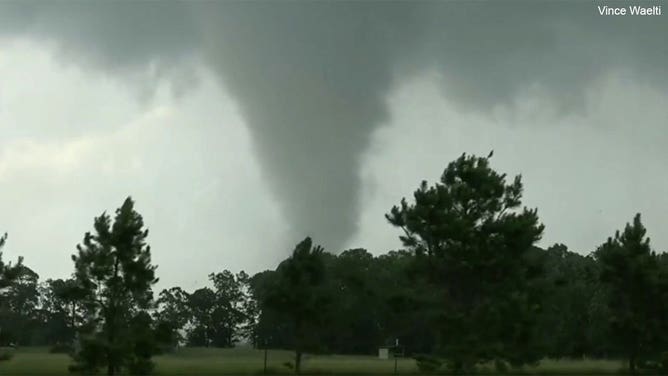NOAA: Doppler radar indicates we may be underestimating tornado wind speeds
A research team from NOAA studied 105 tornadoes that passed very close to National Weather Service Doppler radar sites in various terrains and determined that estimating wind speeds from damage may be selling tornadic wind speeds short.
NOAA: Tornado wind speeds may be higher than estimates
Dr. Tony Lyza with NOAA's National Severe Storms Lab joins FOX Weather to discuss new research that indicates tornado speeds may be greater than typically estimated using damage reports as a guide.
NORMAN, Okla. — When a tornado tears through a community, a National Weather Service storm survey team will sort through the damage left behind to estimate the twister’s peak wind and assign the twister a rating on the Enhanced Fujita scale.
But what if those measurements are underestimating the tornado’s strength?
A recent study by researchers at NOAA’s National Severe Storms Laboratory suggests the current methods of estimating winds inside a tornado may be doing just that.
"We were interested in studying exactly how strong tornadoes are, because right now we estimate this off of damage, which is an imperfect way to do so," said NSSL’s Dr. Tony Lyza, one of the lead researchers on the study. "Because how strong the damage is, is a function of not only how strong the winds are, but how strong buildings are constructed or whatever is being hit by the tornadoes."
DAMAGED WIND TURBINES HAVE BECOME IMPORTANT CLUE IN SOLVING A TORNADO'S STRENGTH

A tornado spins near Mountain View, Missouri, on May 26, 2024.
(Vince Waelti / FOX Weather)
Lyza's team went back and studied 105 tornadoes that passed very close to National Weather Service Doppler radar sites in various terrains.
"(We) found that the radars were often finding wind speeds that were higher near the ground than the damage-based estimates were indicating from the Enhanced Fujita Scale," he told FOX Weather.
Lyza said this study was unique in tracking tornadoes that didn’t just roll across flat terrain.
"A lot of the studies that have looked at radar data and how high the wind speeds are based on radar have had that data collected on the Great Plains where you have flat, wide open areas and very few structures to compare those wind speeds to," he said. "So our study looks at not only tornadoes that occurred on the Great Plains but anywhere in the country where a tornado passed close to a Weather Service radar."
HOW ARE TORNADOES RATED? THE ENHANCED FUJITA SCALE EXPLAINED

Enhanced Fujita Scale
(FOX Weather)
He said that allows their research to compare speeds of damage in forested areas, hilly areas, and more populated areas versus what the radar was measuring.
"And what we ended up finding was that consistently, no matter where the tornadoes occurred or how built up those areas were, the wind speeds tended to be higher based on estimates from radar," Lyza said. "Even if there was a more populated area with more structures to hit and estimate wind speeds from."
Lyza hopes the research will give better ideas of the kind of wind speeds buildings and structures need to withstand during a tornado strike.
"And so this work… steers towards a better idea of what the actual distribution of tornado intensities is so that we can build more resilient communities across the United States," he said.
